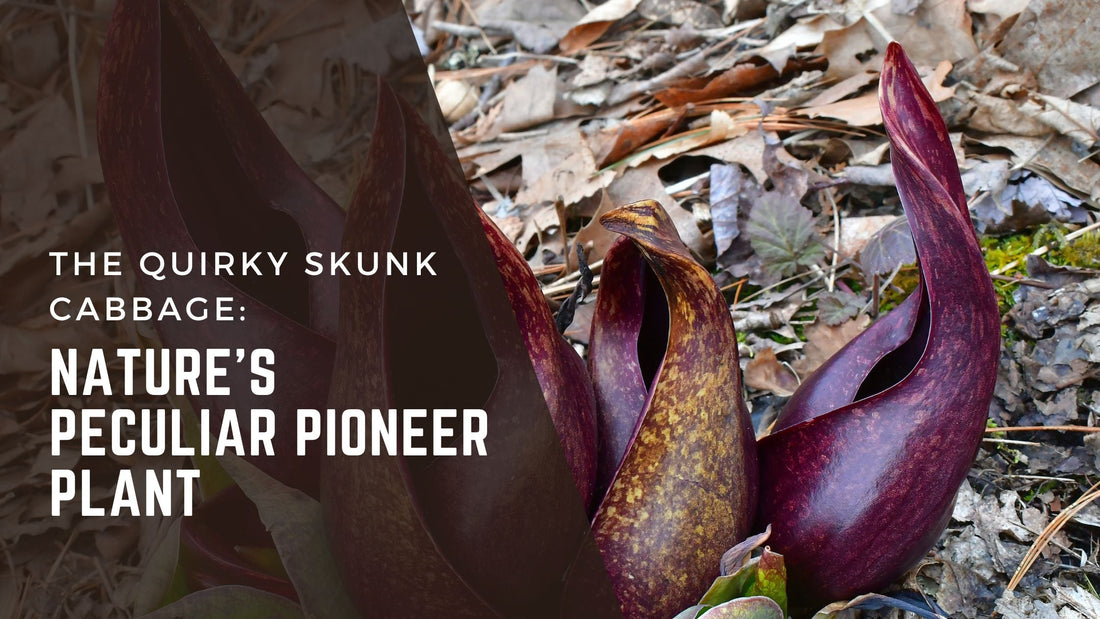When winter begins to tiptoe out of the Midwest, one curious plant is often the first to greet spring: skunk cabbage (Symplocarpus foetidus). This unique wetland dweller is not just another leafy green. Let’s delve into what makes this plant so remarkable and why it’s worth celebrating.
Skunk Cabbage’s Unusual Habitat
Skunk cabbage is a perennial plant most commonly found in wetlands, swamps, and along the edges of streams. What sets it apart, however, is its ability to grow in unconventional wet habitats, such as hillsides where water seeps out. It ekes out a living in these soggy environments, where few other plants dare to thrive.
Early Bloomer with a Fiery Trick
One of the most astonishing characteristics of skunk cabbage is its ability to generate heat—a process called thermogenesis. As winter fades, skunk cabbage emerges, sometimes pushing through snow and ice. Its flowers, encased in a hood-like or shell-shaped structure called a spathe, typically burgundy or mottled purple-brown in color, can maintain internal temperatures of 15-35°C (59-95°F) above ambient temperature.
This heat not only helps it survive frigid conditions but also emits a distinctive odor reminiscent of decaying organic matter. This "skunky" smell mimics rotting flesh thawing from the winters brutal cold, luring pollinators eager for a meal coming out of winter. These tricked insects pollinate the plants flower, ensuring the plant’s reproduction.
An Ecological Powerhouse
Beyond its quirky traits, skunk cabbage is a vital player in wetland ecosystems. Its large leaves create shade and moisture, helping to suppress competing plants and allowing it to dominate its niche. It also serves pollinators (and pollinators serve it) that come out exceedingly early in the season when no other plant is blooming.
A Strange but Useful Plant
Skunk cabbage has historically been utilized by indigenous peoples for medicinal purposes. While the plant contains calcium oxalate crystals that make it inedible when raw, proper preparation through thorough drying or cooking can render it safe for consumption*. It was used to treat ailments such as respiratory issues and swelling.
Today, its ecological contributions far outweigh its practical uses, as it provides food and shelter to a variety of wildlife.

How to Spot Skunk Cabbage in the Wild
If you’re out exploring a wetland or a forested area with seepage, keep an eye out for skunk cabbage’s unmistakable spathe early in the spring. The leaves, which emerge after the flowers, can later grow up to three feet long, making it easy to identify. Always remember to admire it without touching—its leaves can irritate the skin due to their calcium oxalate content. It also typically grows in sensitive habitats that are easily disturbed so tread lightly.
A Plant of Longevity
Skunk cabbage is not only a spring pioneer but also a plant of remarkable longevity, capable of living for decades or even centuries. It is one of the few plants that can generate enough heat to melt through snow and ice, earning its place as a true survivor of the natural world. As a member of the arum family (Araceae), it shares its lineage with other unique and fascinating plants.
Celebrate Skunk Cabbage
Though it may not be the sweetest smelling plant in the Midwest, skunk cabbage deserves recognition for its resilience and ecological significance. It’s a reminder that nature’s quirks often serve an essential purpose, paving the way for other plants and creatures to flourish.
So next time you’re out in early spring and catch a whiff of something unusual in a soggy forest, take a closer look. You just might be in the presence of one of nature’s most intriguing pioneers—the skunk cabbage.
*Natural Communities provides this information for educational purposes only and does not endorse the consumption of this plant.

